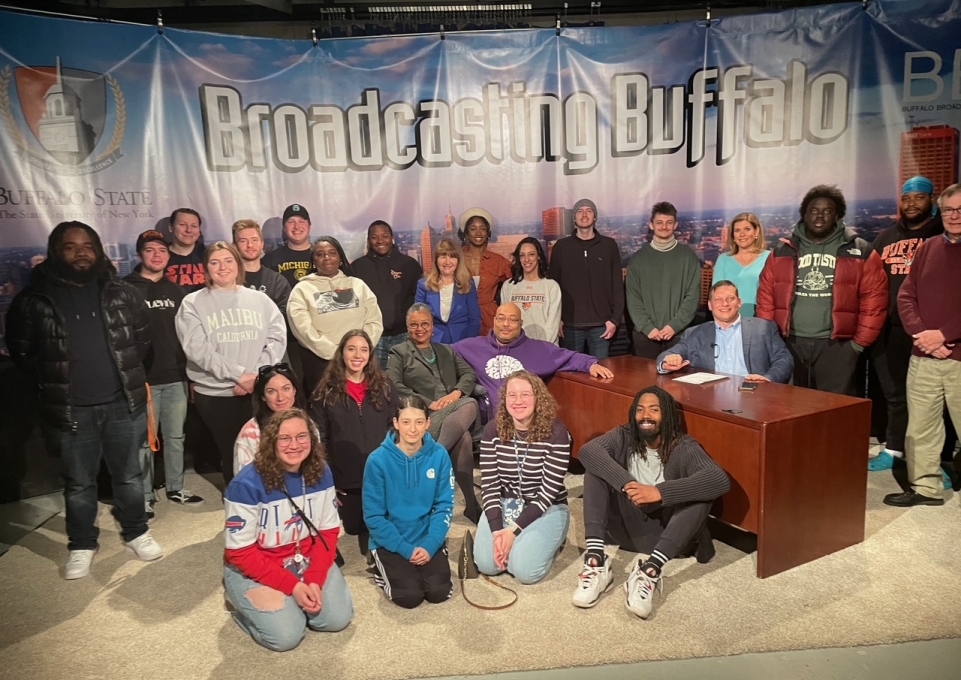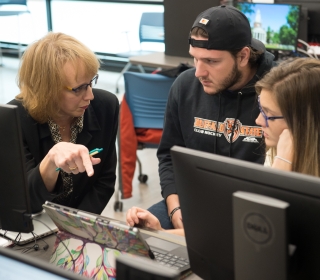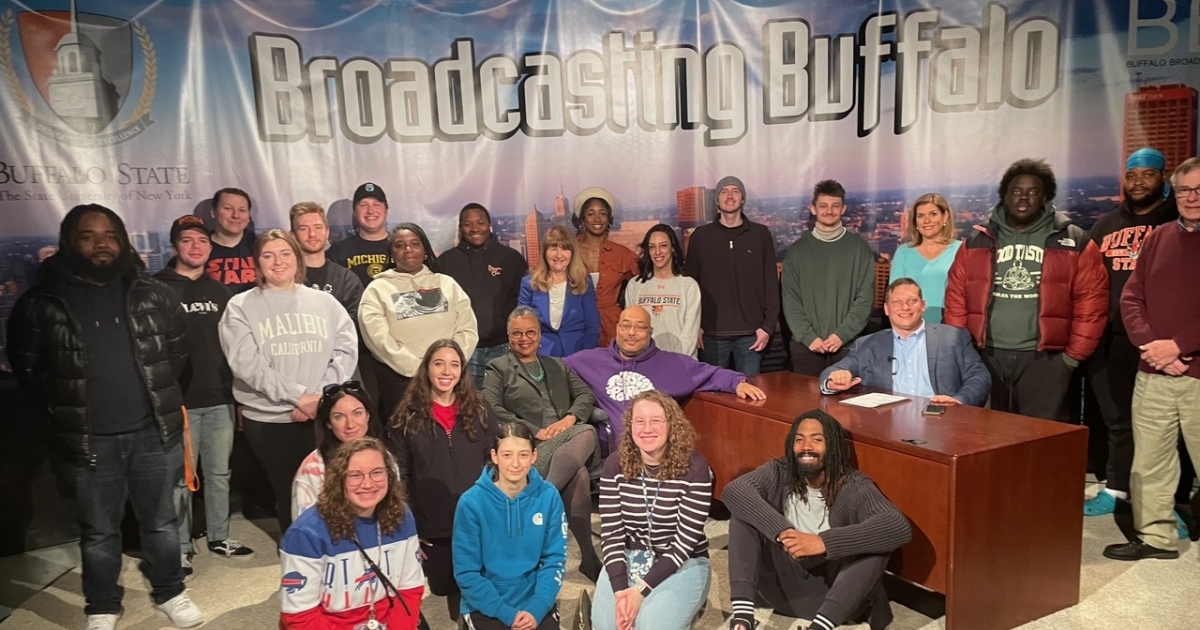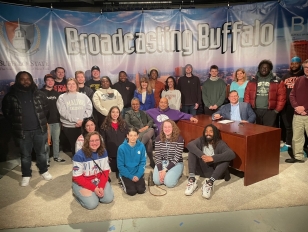
The State University of New York (SUNY) System launched the Institute for Local News at SUNY in February 2024, the first systemwide effort to cover news in rural and other underserved communities while also providing students with rich applied learning opportunities.
Most rural areas in the United States—home to many of SUNY’s 64 campuses—contain significant gaps in news coverage, a result of widespread media consolidation and the decline of local newspapers. In response to these burgeoning “news deserts,” Richard Watts, a professor at the University of Vermont (UVM), founded UVM’s Center for Community News, a cohort of student reporters that helps develop and support partnerships between local news programs and student reporting outlets. Watts saw potential for other colleges and universities to create similar programs, so he began conducting outreach and holding seminars. He and Annemarie Franczyk, Buffalo State University associate professor of journalism, met at a conference at SUNY Cortland in spring 2023.
“There were 10 of us from different SUNY schools talking about our programs and about informing the public of what’s going on in their communities,” Franczyk said. “Richard really tapped a vein.”
Watts visited Buffalo State in fall 2023 to continue the conversation. Soon afterward, he, Franczyk, and George Goikas, a lecturer at Stony Brook University, formed the Institute for Local News at SUNY.
The institute—which currently includes Buffalo State, Brockport, Cortland, Fredonia, New Paltz, Oneonta, Oswego, Stony Brook, the University at Albany, the University at Buffalo, and Broome Community College—engages students in university-led reporting programs with local media partners. It identifies preexisting programs and develops new ones, hosts training meetings, provides templates for best-practice strategies, and generates funding for investments in local news. Though still in its infancy, Franczyk said, the institute is quickly gaining traction and interest.
“It’s a win-win,” said Deborah Silverman, associate professor and chair of the Communication Department. “Students are gaining real-world experience and also providing for news deserts.”

Annemarie Franczyk, associate professor of journalism, instructs students.
Buffalo State has three significant programs with the Institute:
Broadcasting Buffalo, a product of COM 347: Digital and Broadcast Producing and COM 389: Journalism Broadcast Operation, is a current events panel discussion program that airs weekly on WNYO-TV 49. (The program is currently on hiatus but will return next spring.) Students research stories, find panelists, create news packages, and turn material into a 30-minute segment.
“They get fantastic experience that goes beyond the classroom,” Franczyk said. “They’re not just handing in stories for review by professors; their news is out in the public. This is where the rubber meets the road. Journalism majors are showing the skills and the talents they’ve developed.”
Buffalo Sports Insider (BSI) is a video podcast that is live-streamed twice a week. BSI currently covers the Bills and Sabres, but Franczyk said it plans to expand to collegiate and school sports.
“Our association with the Institute for Local News has created a connection between Buffalo Sports Insider and Finger Lakes Television,” Franczyk said. “Finger Lakes Television is going to be picking up coverage from Buffalo Sports Insider. That connection is an example of the synergy the institute has created between geographic locations that don’t have the news.”
Buffalo Review West (BRW), a product of COM 405: Online Newsroom, is a student-operated newspaper that covers Buffalo’s West Side. BRW replaced a weekly newspaper that went out of publication years ago.
“The class has filled the void,” Franczyk said. “We have gotten reactions from the people we cover. They’ve shared the stories on their own social media. They’ve come back to us with story ideas. We’re making an impact.”
A group of key players, including Franczyk, Watts, and Goikas, meet monthly to discuss updates, creation of new programs, corresponding courses, and community outreach. The meetings are also attended by former journalist Lane Filler, SUNY chief communicators officer for Chancellor John B. King Jr.
“To have the chancellor plugged into this is significant,” Silverman said. “SUNY is putting power behind this idea.”
"We've realized this can serve not only our students but our communities as well.”
Buffalo State’s Communication Department also partners with the Buffalo Broadcasters Association, which Silverman said is incredibly dedicated to education. “They want to make sure the next generation of broadcasters has everything they need to succeed,” she said.
The journalism program is one of the oldest majors in Buffalo State’s nationally accredited Communication Department. The program has produced such notable alumni as Sheila Rayam, ’90, executive editor of the Buffalo News; Claudine Ewing, ’92, anchor for WGRZ-TV 2; Dave McKinley, ’86, general assignment reporter at WGRZ-TV 2; I’Jaz Ja’ciel, ’19, ’20, reporter for the Investigative Post; and Kate Glaser, ’10, founder of Hope Rises News.
“Our graduates are on the air and writing for newspapers across the country,” Silverman said. “Participation in the institute gives a seal of approval to what we’ve been doing and will be doing in the future. Being a founding member strengthens our role and the opportunities we present for students.”
Franczyk believes Buffalo State may be in on the ground floor of a larger nationwide movement to patch news deserts. “Everyone’s worried about journalism going away and the rise of people in power who are going to try and get away with things,” she said. “This movement just might be the way to counteract that.”
“We’ve been doing this work for our students,” added Silverman. “Now we’ve realized this can serve not only our students but our communities as well.”
Inline photo by Buffalo State Marketing and Communications.



